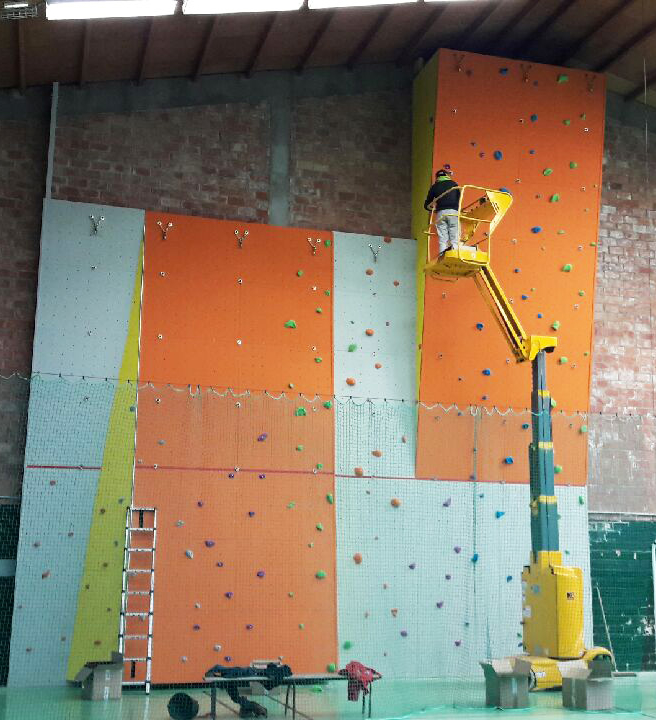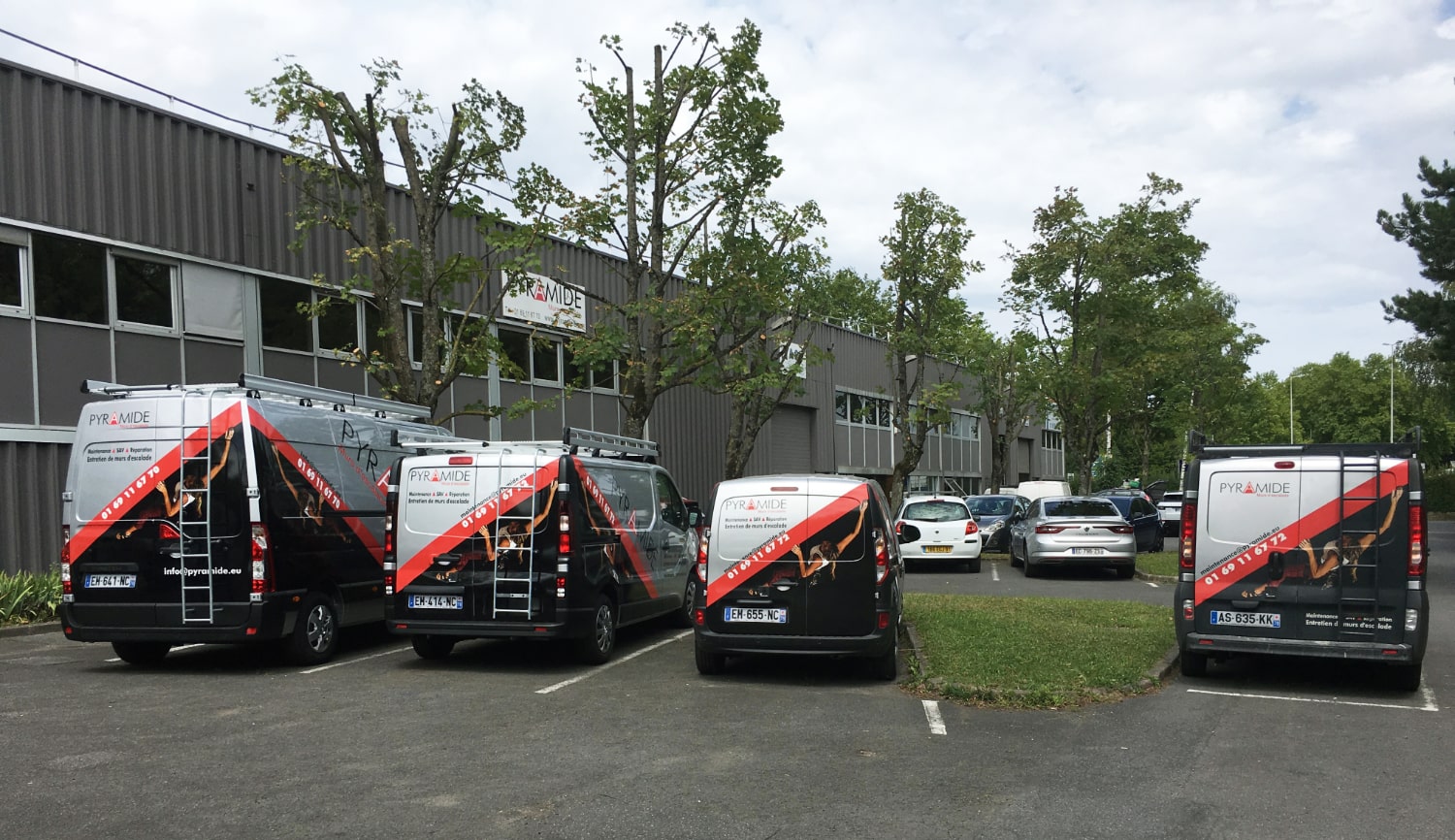MAINTENANCE OF ROPE CLIMBING AND BOULDERING WALLS
– level 1, 2 and 3 – standards EN 12572-1:2017 – EN 12572-2:2017 – EN 12572-3:2017

Your rope climbing wall was installed before 22 March 2017 (effective date of EN 12572-1) and / or your bouldering wall installed before 25 February 2017 (effective date of EN 12572-2) and you wish to check:
If they can be used safely?
If they comply with the latest standards in force?
You can refer to the instructions provided by the wall builder to carry out the verification, care and maintenance work yourself under your responsibility if you have the skills in-house.
Since 1988, Pyramide has been specialised in the manufacture and installation of climbing walls and initiated the French and European standards. Our professional services offer verification and inspection of all your installations, no matter the brand.
our services
Expertise and safety diagnostics:
- inspection of the location of belay points
- inspection of the components of belay points
- inspection of belay point attachments
- inspection of the support frame
- inspection of the attachment of the support frame
- inspection of the condition of structural elements
- inspection of the condition of surface components (panels or surfaces, holds)
- inspection of the safety environment of the climbing wall (landing area, drop zone, etc.)
Upgrading to current standards:
- establishment of the stability calculation score
- total or partial replacement of belay points and supports
- implementation of tests on belay points (according to NF EN 12572-1:2017).
- testing of surface elements
- delivery of a report and preparation of a certificate of conformity
- standards marking
Corrective (repairs and/or replacements) and preventive (upkeep, repairs) maintenance:
- inspection + corrective and preventive maintenance of belay points
- inspection + corrective and preventive maintenance of the attachment points
- inspection + corrective and preventive maintenance of the support frame
- inspection + corrective and preventive maintenance of the fixation of the support frame
- inspection + corrective and preventive maintenance of panel attachments
- maintenance, repair, replacement of surface components (panels, surface, holds, etc.)
- verification of PPE (Personal Protective Equipment): quickdraws, etc
- inspection of the safety environment of the climbing wall, in particular of the landing surface (Standards NF P90/312 and NF EN 12572-2:2017)
- delivery of a detailed report at the end of each operation and installation of a plaque attesting to the maintenance carried out
Our field experts are at your disposal for any quote.
THE PYRAMIDE GUARANTEE
- certified specialised safety-trained inspectors (PPE)
- safety recommendations and advice whenever necessary
- management and planning of occasional inspections or every year if you subscribe to a multi-year maintenance contract

PYRAMIDE TIPS
- The safety points of the climbing structure must be inspected at least once a year and in particular the track top belay points (the wear of the carabiners must be less than 5 mm and show no signs of corrosion).
- Systematically provide a safety area adapted to each wall (mat, crash pad, cushioned flooring, gravel or other) in order to soften the landing and comply with the standards NF P90/312 and EN 12572-2:2017.
- The landing area must be continuous (no break between two mats for example).
- Draw a line (red, for example) just below the first row of belay points and put an information panel prohibiting climbing without rope above this line.
- Place a clearly visible “information and recommendations for proper use” sign near the climbing wall.
- Update rope climbing and bouldering walls to European standards (EN 12572-1 of 22/03/2017 and EN 12572-2 of 25/02/2017) if made before the date these standards took effect. The case law on accidents involving sports equipment considers that a failure to comply with a standard (even if the standard is not mandatory) is a fault of the owner of the equipment.